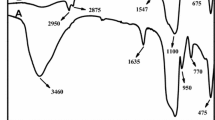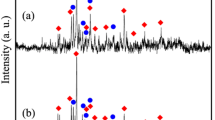Abstract
A CLA rich-soy oil (CLARSO) has been produced by heterogenous catalysis. This oil may provide significant health benefits. The objectives of this study were: to determine the oxidative stability of the CLARSO and CLARSO after adsorption treatment [1], relative to conventional soy oil, in terms of primary and secondary oxidation products and to determine CLA and other unsaturated fatty acids oxidation kinetics in the CLARSO [2]. Primary and secondary oxidation products were measured in CLARSO and soy oil samples kept at 50 °C in the dark. The CLARSO was less stable than soy oil but bleaching improved its oxidative stability. The induction times were dependent on the analytical method used. Fatty acid oxidation kinetics was determined by measuring each fatty acid and hydroperoxides in CLARSO at 52, 61 and 69 °C in the dark. Unsaturated fatty acids oxidation rate constants, activation energies and frequency factors were obtained by the Arrhenius equation. Kinetics studies showed that CLA isomers had higher rate constants, higher activation energies and higher frequency factors than linoleic acid which showed that the CLA isomers had more molecular collisions with oxygen than linoleic acid.











Similar content being viewed by others
References
Rainer L, Heiss CJ (2004) Conjugated linoleic acid: health implications and effects on body composition. J Am Diet Assoc 104:963
Yettella R, Castrodale C, Proctor A (2012) Oxidative stability of conjugated linoleic acid rich soy oil. J Am Oil Chem Soc 89:685–693
Jain VP, Proctor A, Lall R (2008) Pilot-scale production of conjugated linoleic acid-rich soy oil by photoirradiation. J Food Sci 73:E183–E192
Proctor A, Shah U (2014) Conjugated linoleic acid rich vegetable oil production from linoleic acid rich oils by heterogeneous catalysis. US Patent US 2014/0154393 A1
Zhang A, Chen ZY (1997) Oxidative stability of conjugated linoleic acids relative to other polyunsaturated fatty acids. J Am Oil Chem Soc 74:1611–1613
Chen ZY, Zhang A, Kwan KY, Chan PT (1997) Reassessment of the antioxidant activity of conjugated linoleic acids. J Am Oil Chem Soc 74:719–753
Luna P, de la Fuente MA, Salvador D, Márquez-Ruiz G (2007) Differences in oxidation kinetics between conjugated and non-conjugated methyl linoleate. Lipids 42:1085–1092
Giua L, Blasi F, Simonetti MS, Cossignani L (2013) Oxidative modifications of conjugated and unconjugated linoleic acid during heating. Food Chem 140:680–685
Nourooz-Zadeh J (1999) Ferrous ion oxidation in presence of xylenol orange for detection of lipid hydroperoxides in plasma. Methods Enzymol 300:58–62
Suzuki R, Nakao K, Kobayashi M, Miyashita K (2001) Oxidative stability of conjugated polyunsaturated fatty acids and their esters in bulk phase. J Oleo Sci 50:491–495
Yettella R, Castrodale C, Proctor A (2012) Effect of added conjugated linoleic acid and iodine concentrations on conjugated linoleic acid-rich soy oil oxidative stability. J Am Oil Chem Soc 89:1939–1941
Bailey AE, Feuge RO (1943) Laboratory deodorizer for fats and oils. Ind Eng Chem Anal Ed 15:280–281
ASTM E2823-11 standard test method for analysis of nickel alloys by inductively coupled plasma mass spectrometry (performance-based method) (2013) vol. 03.05. Annual book of ASTM standards
Proctor A, Bowen DJ (1996) Ambient-temperature extraction of rice bran oil with hexane and isopropanol. J Am Oil Chem Soc 73:811–813
Crowe TD, White PJ (2001) Adaptation of the AOCS Official Method for measuring hydroperoxides from small-scale oil samples. J Am Oil Chem Soc 78:1267–1269
American Oil Chemists’ Society Official Method Cd 18–90 (2004) Official methods and recommended practices of the AOCS, 5th edn. AOCS, Champaign
Christie WW, Sebedio JL, Juaneda P (2001) A practical guide to the analysis of conjugated linoleic acid. Inform 12:147–152
Ma DW, Wierzbicki AA, Field CJ, Clandinin MT (1999) Conjugated linoleic acid in Canadian dairy and beef products. J Agric Food Chem 47:1956–1960
Minemoto Y, Ishido E, Adachi S, Matsuno R (1999) Autoxidation kinetics for polyunsaturated acylglycerols. Food Sci Technol Res 5(1):104–107
Bolland JL (1949) Kinetics of olefin oxidation. Q Rev Chem Soc 3:1–21
Choe E, Min DB (2006) Mechanisms and factors for edible oil oxidation. Compr Rev Food Sci Food Saf 5:169–186
Frankel EN (2005) Hydroperoxide formation, lipid oxidation, 2nd edn. Oily Press, Dundee, pp 25–50
Van den Berg JJ, Cook NE, Tribble DL (1995) Reinvestigation of the antioxidant properties of conjugated linoleic acid. Lipids 30:599–605
Chen ZY, Zhang A, Kwan KY, Chan PT (1997) Reassessment of the antioxidant activity of conjugated linoleic acids. J Am Oil Chem Soc 74:719–753
Kittipongpittaya K, Chen B, Panya A, McClements D, Decker E (2012) Prooxidant activity of polar lipid oxidation products in bulk oil and oil-in-water emulsion. J Am Oil Chem Soc 89:2187–2194. doi:10.1007/s11746-012-2128-5
Tsuzuki T, Igarashi M, Iwata T, Yamauchi-Sato Y, Yamamoto T, Ogita K, Suzuki T, Miyazawa T (2004) Oxidation rate of conjugated linoleic acid and conjugated linolenic acid is slowed by triacylglycerol esterification and alpha-tocopherol. Lipids 39:475–480
Yang L, Cao Y, Chen J, Chen Z (2009) Oxidative stability of conjugated linolenic acids. J Agric Food Chem 57:4212–4217
Author information
Authors and Affiliations
Corresponding author
About this article
Cite this article
Lele, S.R., Proctor, A. & Ruan, C.M. Oxidative Stability of Conjugated Linoleic Acid Rich Soy Oil Obtained by Heterogeneous Catalysis. J Am Oil Chem Soc 91, 2043–2052 (2014). https://doi.org/10.1007/s11746-014-2546-7
Received:
Revised:
Accepted:
Published:
Issue Date:
DOI: https://doi.org/10.1007/s11746-014-2546-7




